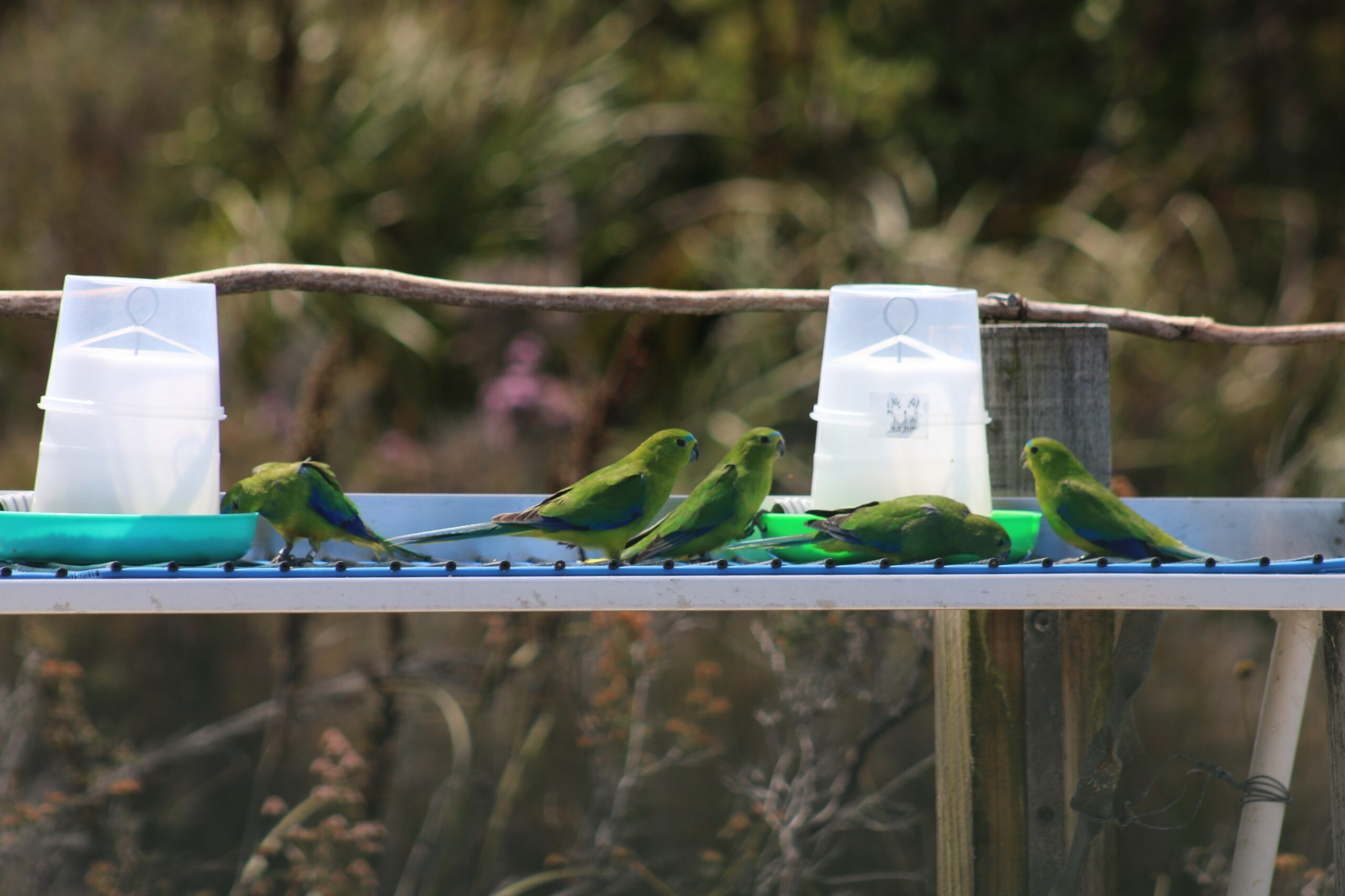MEDIA RELEASE
Wilderness Grand Designs – new infrastructure aids recovery efforts for Orange-bellied Parrots
Every spring, a small troupe of Orange-bellied Parrots makes the long flight from mainland Australia to breed in the remote wilderness of southwest Tasmania. Conservation efforts to protect this charismatic, colourful and critically endangered bird have been underway for years, with managers spending countless hours monitoring nests, nestlings and adult birds every year to assess their recovery and understand more about how to improve their chances at survival.
As part of a partnership project with NRM South and the Department of Natural Resources and Environment Tasmania’s Orange-bellied Parrot Tasmanian Program, funded through the Australian Government’s National Landcare Program, a series of infrastructure upgrades means that this year’s arrivals will be enjoying new nest boxes, new nesting sites and a new aviary and feed table.
Dr Shannon Troy, OBP Tasmanian Program Manager with NRE Tas, explained that due to a lack of available tree hollows, Orange-bellied Parrots breed almost exclusively in nest boxes. For maintenance, and to reduce the risk of disease transmission such as Beak and Feather Disease Virus, the boxes need to be regularly checked, cleaned and replaced.
‘Prior to this project, there were around 90 available boxes, although a lot of these end up being used by other animals so the birds’ choice is still limited,’ she explained. ‘Through this project we’ve continued repairing and replacing boxes but have also added another 60 boxes, bringing the total to 150. Forty-six of these boxes were installed in five new areas to help expand their available range.’
Captive breeding also plays a vital role in Orange-bellied Parrot conservation efforts. With only three wild females returning to breed in 2016, supplementing the population with birds bred in captivity has played a big part in their recovery. Captive birds are sent to Melaleuca for a monitored release, and a final part of this project will be rebuilding a release aviary to support continued releases. ‘There will also be a new hide and feed table built on site,’ Dr Troy added. ‘This will help us safely monitor the birds without disturbing them.’
Dr Cindy Hull, NRM South’s Biodiversity Program Manager, believes ongoing partnership projects such as this are vital to ongoing recovery efforts. ‘Orange-bellied Parrots are one of two critically endangered migratory parrot species that breed in Tasmania, with the other being the Swift Parrot,’ said Dr Hull. ‘These are a priority species not just for the Tasmanian and Australian Government but are also identified in southern Tasmania’s regional strategy as a priority for action. Our goal by 2030 is to improve their breeding success by supporting projects that protect their habitat alongside other emergency interventions.’
The Tasmanian Government will be investing $1.3 million over the next two years to Orange-bellied Parrot Migration and Tracking. This initiative will build on existing proof‑of‑concept trials to develop a tracking program, increasing knowledge of the species migratory pathways and understanding of risks.
-ENDS-
